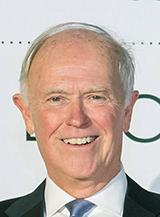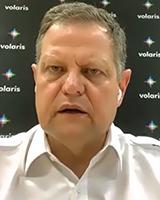CAPA Live: CEOs Speak To The Recovery And Outlooks

American Airlines chairman and CEO Doug Parker believes the US industry is in “good condition for riding out the crisis.”
In a keynote address at the inaugural CAPA Live event in October, Parker said American and its competitors were “positioned to withstand a situation as bad as the one we’re in now for well over a year or more, which I think no one anticipates.”
He noted that while airlines needed financial support early in the crisis, which Congress provided through the CARES Act, “we’ve raised more than enough liquidity to withstand a continuation of this.”
The US is witnessing only gradual increases in demand for air travel and the large majority of that is for domestic routes, but Parker is confident that airlines can ride through the recovery.
“There is enormous pent-up demand for global travel,” he said. “While there are some that are simply not flying because they’re afraid to fly, it’s much more about there being no reason for them to fly. The biggest thing we need to do is give people reasons to travel.”
When international routes do open up, air fares may have to be lower initially, he acknowledged.
Emirates Airline president Tim Clark, another keynote speaker, said he believed demand for international travel will return “in a very robust manner” because it has been so suppressed over the past 10 months, although he does see the low demand levels continuing for six to nine more months.
“Airlines will need to ensure that we are a known entity by maintaining physical product and continuing to use their marketing tools to keep their brands in the minds of customers,” he said.
Emirates plans to reopen the lounge and bar area, including showers in the first-class cabin, on the all-premium upper deck of its Airbus A380s, reinforcing the iconic brand product. Common spaces will adhere to protocols such as social distancing and mask wearing.

Credit: Emirates Airline
Clark believes the role of the network carrier could ultimately be stronger than in the past.
“You have to assume you will recapture the growth curve prior to the pandemic,” he said, with a demand-driven bounce back that could occur sooner rather than later.
Rob Gurney, CEO at the oneworld global alliance, said the pandemic will lead to the majority of airlines becoming smaller, which will make the global network reach of alliances even more important.
He said it would also make sense for competition authorities to take a more flexible view during the industry’s restoration and rebuilding phase in the short- to medium-term. There was a rationale for allowing airlines to collaborate, on a market-by-market and airline-by-airline basis, he said.
Gurney said he was not sure if anyone really knew whether business travel would fully recover, but a clearer picture should emerge when travel restrictions start to lift.
Meanwhile, the experience of Mexican ultra-LCC Volaris indicates a continued demand for visiting friends and relatives (VFR) travel. Volaris CEO Enrique Beltranena said the carrier had always targeted bus passengers, and the pandemic, combined with air travel’s strong safety record compared with road travel, is making that an even stronger proposition.
“Proportionally, we are seeing much more first-time flyers getting into the system right now,” he said during CAPA Live. “The bus market is a 3 billion passenger market versus 105 million air passengers. The difference is humongous,” he said, and it offers a huge market opportunity.

Credit: CAPA
Beltranena said around 22% to 24% of Volaris passengers get bus fare quotes before seeking airline fare quotes. The airline has been completing elasticity tests in different markets and on different segments “because nothing is reacting the same,” he said.
The findings show that VFR sometimes reacts better in certain markets, while leisure can react better in other markets. The company has been able to build a basic forward strategy out of data from the H1N1 virus recovery in 2009.
“We knew exactly that our VFR market was the one that was going to recover faster,” Beltranena said.
Edward Sims, CEO at Calgary-based LCC WestJet, warned the carrier will have to consider “even more new and creative ways of generating financial flexibility to reduce cash burn” if there is no uptick in air travel demand during the stabilization phase.
“We find ourselves in a position where realistically you’re burning the furniture to keep the house warm, and that’s OK until you’ve run out of furniture,” Sims said.
WestJet employed 14,000 staff in the middle of February, but by October that was down to 4,000 active staff. The airline has been forced to make 4,000 others permanently redundant and another 6,000 have been stood down or furloughed until there is a recall.
The lack of government support for aviation has put the industry at “a major structural disadvantage,” he said.
Sims added that he understood why the government took its position, from a social welfare perspective, but it had left Canadian aviation “very exposed.” Between 15% and 20% of the market share held by domiciled Canadian carriers had moved to foreign airlines over seven months, which, Sims said, “is an invidious and frankly unsustainable position.”
